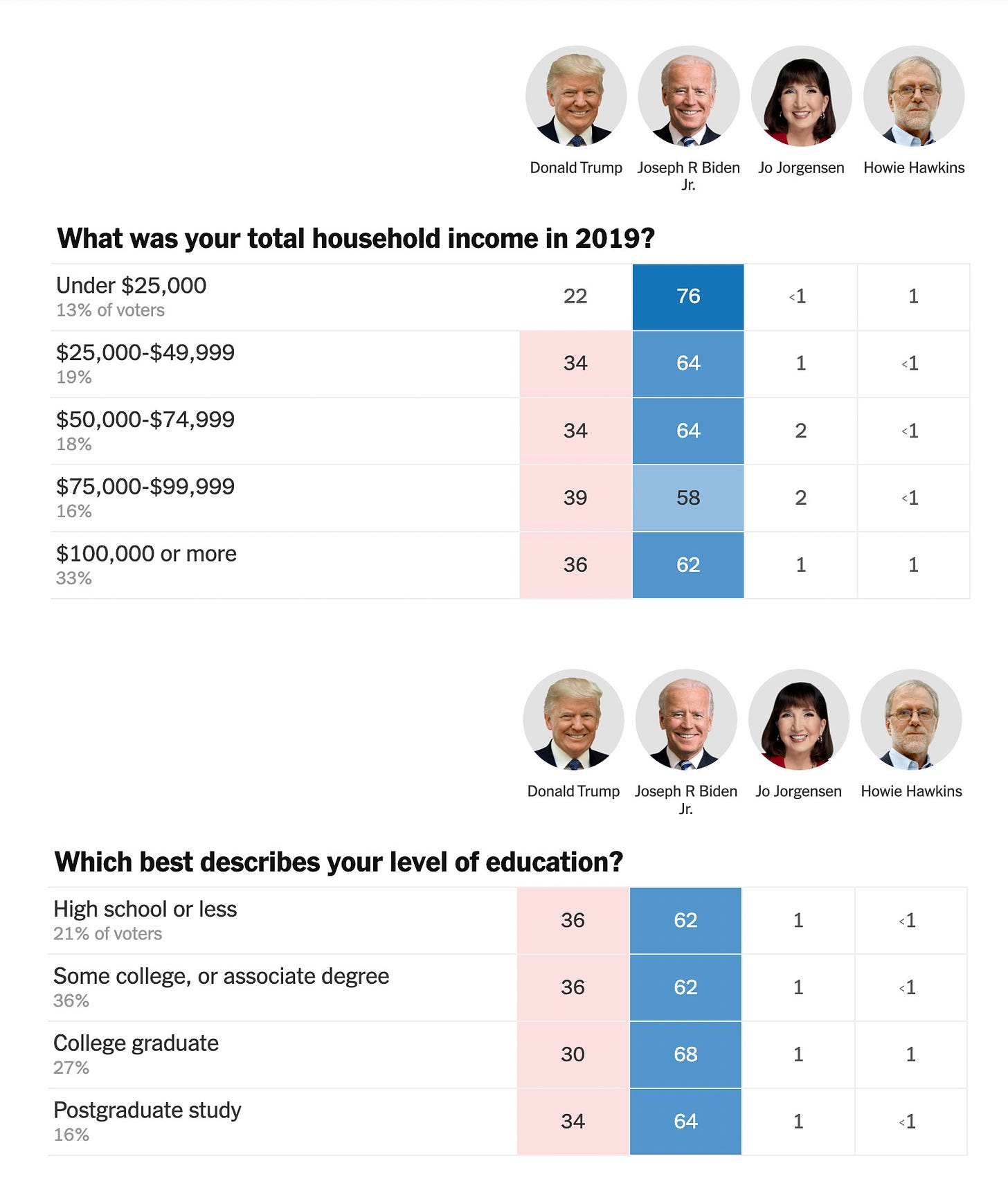Everyone is familiar with the political narrative: Trump is the candidate of those left behind by America’s post-industrial economy and the postmodern values that have accompanied it. Both his supporters and detractors, to some extent, endorse it. To his fans, Trump is a populist hero, raging against the arrogant elites on behalf of the forgotten ordinary American. To his haters, he’s a demagogue exploiting the petty resentments of the downwardly mobile and fashioning them into a neo-fascist movement. These two descriptions are not necessarily mutually exclusive.
There’s a part of this story, though, that has never added up for me. I live in the ultra-Democratic Bay Area, where everyone hates Trump. Though this place is synonymous with “America’s post-industrial economy,” not everyone here is a software coder or a yoga instructor. Countless Bay Area residents have been left out of our hyper-modern regional economy. Yet, unlike in rural America, they still have to survive this economy’s absurdly inflated cost of living. Some of them serve as the sweatshop workers of the tech industry, driving Ubers or delivering DoorDash. Others are stuck in poverty-wage service sector jobs, or they’re at home, unemployed. They have plenty of resentments and grievances against the economic and cultural elite. But they’re not voting for Trump.
Here’s a New York Times survey of how Californians voted in the 2020 presidential election, by education and income — two approximations of social class. There isn’t much more that jumps out here than that everyone voted for Biden over Trump by something like 2 to 1, without any huge or consistent variation by subcategory.
Social class doesn’t separate the nursing aide in San Francisco who votes straight-ticket Democratic in every election from the part-time hairdresser in South Bend, Indiana with the MAGA hat in her trunk. So what does? Why are the political worldviews of low-income people in the metropolises of Blue State America so vastly out of step with those of the millions of working-class voters in the red states — and in the red counties of the blue states — who are flocking to the Republican Party?
There are a few obvious answers. One is the clear electoral divide between, on the one hand, the country’s cities and college towns, and, on the other, its small towns, exurbs, and rural areas. After all, even in blood-red Utah, Salt Lake City is a Democratic stronghold, as are St. Louis and Kansas City in conservative Missouri, or Nashville and Memphis in right-wing Tennessee. Maybe the nursing aide votes Democratic because she lives in a big city, and the hairdresser votes Republican because she does not.
But this doesn’t answer the question, it only complicates it. From the same California survey:
As one would expect, in California, the more urban your habitat, the more likely you vote blue, and the more rural your environment, the more likely you vote red. But that’s not really what stands out in this survey. The big takeaway is that Biden beat Trump by wide double-digit margins across nearly every population density in the state. Only in rural areas was it even close. If town versus country were the principal factor in how you vote, you’d expect Trump to clean up in these rural parts of even blue states like California. Yet Biden won the majority of these voters, too.
And to the extent there is a correlation, what explains it? There’s no self-evident reason why Amazon drivers in urban cores should have wildly divergent political sentiments from Amazon warehouse workers in small towns 40 minutes outside of them. What accounts for these differences?
Keep reading with a 7-day free trial
Subscribe to Social Studies to keep reading this post and get 7 days of free access to the full post archives.





